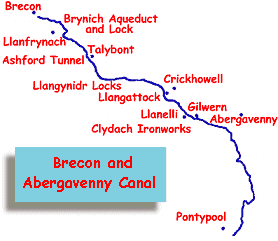|
Most
canals had been in use for many years by the start of the Victorian
age. But they remained of great value in transporting
goods until the new steam railways took most of
their business away.
|
The building of the Brecon and Abergavenny Canal was made possible by an Act of Parliament passed in 1793, at a time when there was a great demand for new waterways.
Canals were then seen as the best means of transporting large quantities of heavy goods like coal, lime, iron and timber more cheaply at a time when most roads were in a very poor condition.

